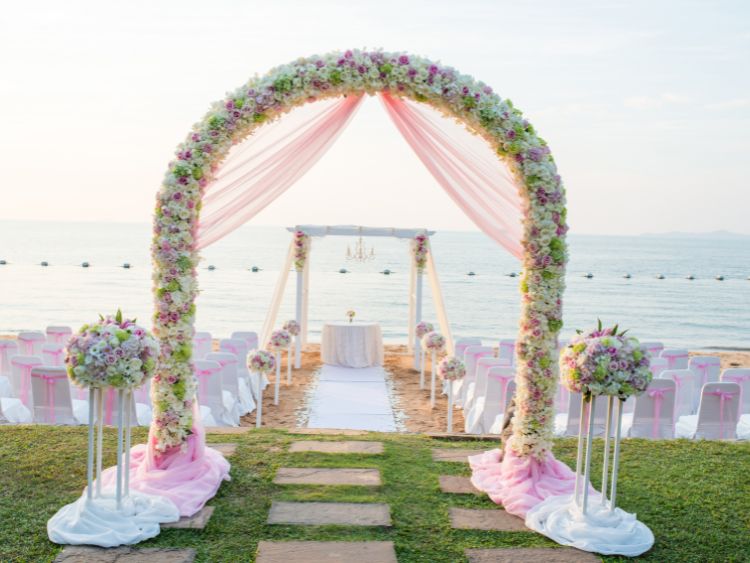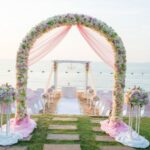The Confusing World of Dress Codes
Dress codes can be a nightmare, especially when you’re invited to an event that asks for semi-formal or formal attire. We’ve all been there — standing in front of the closet, wondering what in the world “semi-formal” means. Is it a tux? A nice suit? Do you need a ball gown, or can you get away with a chic cocktail dress? This article is here to save the day by clearing up the confusion surrounding semi-formal vs formal attire. By the time we’re done, you’ll be dressing with confidence, no matter the event!
What is Semi-formal?
Let’s start with the more flexible of the two: semi-formal attire. Think of semi-formal as the sweet spot between casual and formal wear. It’s dressy but not over the top. Picture yourself attending a fancy dinner, a wedding reception, or an office party that has a touch of elegance. It’s all about striking that balance between polished and comfortable.
Semi-formal Attire for Men
- Suits, but not tuxedos: While a suit is a must, you don’t need to go all out with a tux. A two-piece suit with a tie will do just fine.
- Collared shirts: A crisp, button-down shirt is essential. Go for solid colors or subtle patterns.
- Dress shoes: Polished leather shoes will complement the look. Sneakers are a definite no-go.
- Accessories: Feel free to accessorize with a nice watch, cufflinks, or even a stylish tie bar.
Semi-formal Attire for Women
- Cocktail dresses or skirts: A knee-length cocktail dress is perfect for a semi-formal event. If dresses aren’t your thing, a sleek skirt paired with a chic blouse works, too.
- Dressy separates: Blazers, tailored trousers, and fancy tops can also work for a more modern take on semi-formal wear.
- Heels or flats: You don’t have to go sky-high with the heels, but make sure your footwear is polished and chic.
- Accessories: Jewelry can be more fun here — feel free to add statement earrings or a clutch.
What is Formal?
When we say formal, we’re talking about high-end events that demand your absolute best. Formal attire is required at weddings, gala dinners, and black-tie affairs. Here, you’re expected to go all out with luxurious fabrics and sharp silhouettes.
Formal Attire for Men
- Tuxedo: Yes, this is where the tux comes into play. A full-on tuxedo with a black tie or bow tie is the standard for formal events.
- Black dress shoes: These should be shiny, polished, and appropriate for the tux. Oxford shoes or patent leather will do the trick.
- White dress shirt: A clean, crisp white shirt is mandatory for a formal event. No patterns or bold colors here.
- Cufflinks and bow ties: Cufflinks and bow ties add that extra touch of sophistication required at formal gatherings.
Formal Attire for Women
- Floor-length gowns: At a formal event, women are expected to wear long, elegant gowns that hit the floor.
- Heels: A nice pair of heels, preferably stilettos or pumps, will complete the outfit.
- Sophisticated jewelry: Diamonds, pearls, or other precious stones are the way to go. The idea is to add a touch of glam without going overboard.
- Clutch or evening bag: A small, elegant evening bag is perfect for carrying your essentials.
Semi-formal vs Formal: The Key Differences
Now that you know the basics of both dress codes, let’s break down the key differences between semi-formal vs formal attire so you can always be sure you’re dressing appropriately.
1. Level of Formality
- Semi-formal is more flexible. It’s a step above casual but doesn’t require the high-end fabrics or strict dress rules that come with formal attire.
- Formal events demand that you go all out. This is where you bring out your most polished and luxurious outfits, leaving little room for improvisation.
2. Types of Events
- Semi-formal is common for cocktail parties, wedding receptions, or upscale work events.
- Formal is reserved for gala dinners, black-tie weddings, and charity balls.
3. Outfit Requirements
- For semi-formal, men can wear suits without a tuxedo, and women can opt for cocktail dresses.
- For formal, men are expected to wear tuxedos, while women need to choose long evening gowns.
The Flexibility of Semi-formal Attire
Semi-formal wear is often easier to navigate because of its flexibility. It allows you to express your personal style more than formal wear, which has stricter rules. A modern, stylish suit for men or a sleek cocktail dress for women can make just the right impression without being too stiff. You can play with patterns, textures, and colors more freely in semi-formal attire.
Formal Wear: When in Doubt, Go Classic
When it comes to formal attire, less is more. Think timeless. A black tuxedo for men and a classic evening gown for women will always be safe bets. Don’t try to be too adventurous here — it’s all about looking polished and elegant.
FAQs About Semi-formal vs Formal
1. What happens if I’m underdressed at a formal event?
You’ll probably feel out of place. Formal events have stricter expectations, so being underdressed can stand out in a not-so-good way. It’s always better to be slightly overdressed than underdressed for formal occasions.
2. Can I wear a long dress to a semi-formal event?
Yes, but keep it simple. While floor-length gowns are reserved for formal events, a long, flowy dress without too much embellishment can work for semi-formal settings.
3. Are jeans ever acceptable for semi-formal?
Absolutely not. Jeans fall under casual wear, and they don’t belong at a semi-formal event. Even if the dress code seems relaxed, jeans are a no-go.
4. What’s the safest color for formal wear?
Black is a timeless choice for both men and women at formal events. However, dark navy or deep burgundy can also be elegant alternatives.
5. Can women wear pants to a formal event?
Yes, but it depends on the styling. A well-tailored pantsuit made from luxurious fabrics can be an acceptable formal choice. Just make sure it looks polished and sophisticated.
Summary: Dress to Impress
Navigating the world of semi-formal vs formal attire doesn’t have to be a headache. Semi-formal allows more freedom with your outfit choices, letting you mix personal style with class. Formal, on the other hand, demands strict adherence to dress rules that emphasize elegance and sophistication. The key is knowing your event, understanding the dress code, and dressing to impress!







